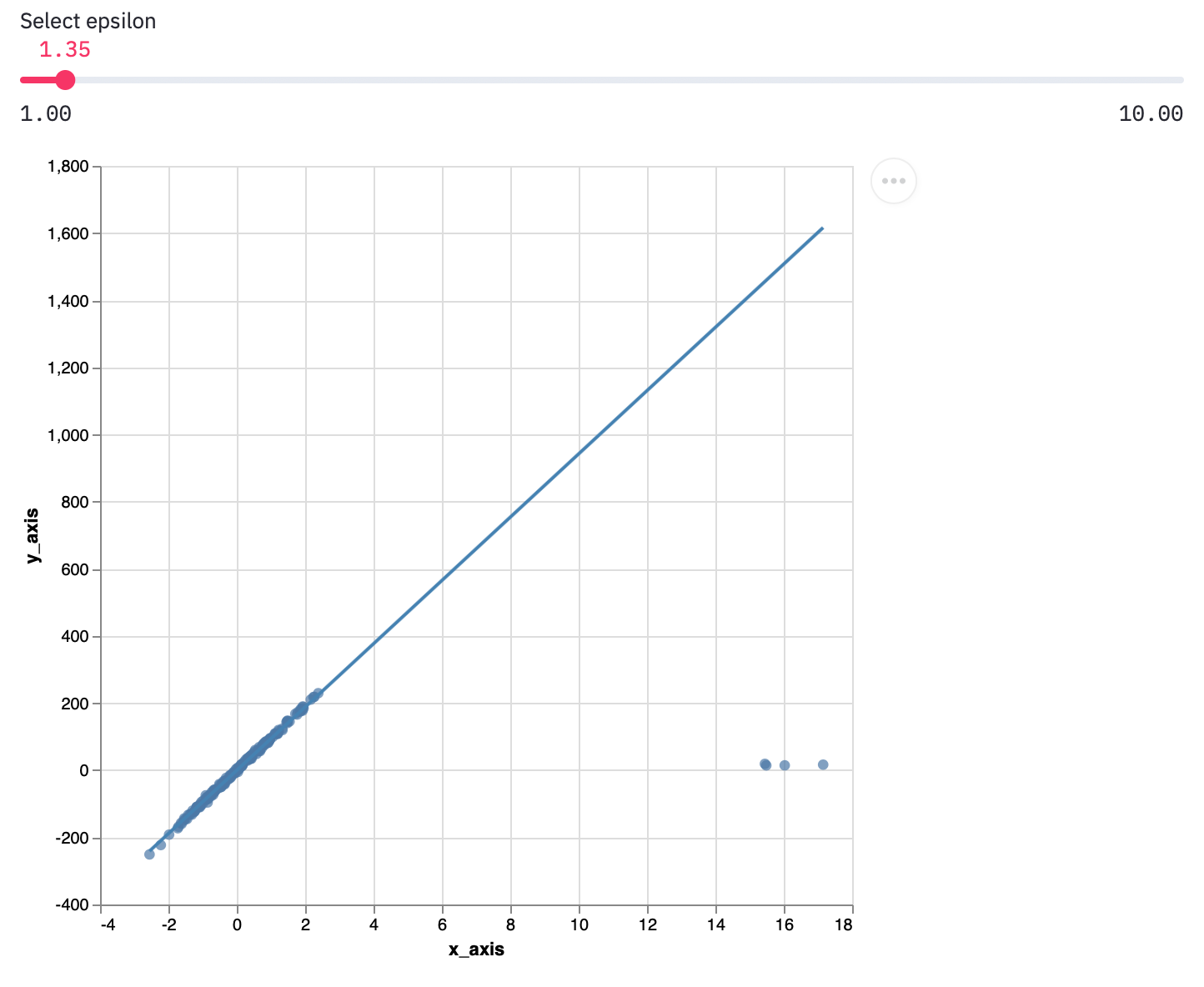概要
Python の機械学習ライブラリー sckit-learn を用いた、ロバスト線形回帰の描画方法を紹介する。本稿では、python の描画ライブラリ altair でチャートオブジェクトを作成し、Streamlit というアプリケーションフレームワークを使ってブラウザに表示させる。
ロバスト線形回帰の特徴
最小二乗法による線形回帰に比べて、外れ値に影響を受けにくい。
ロバスト線形回帰の作成
HuberRegressor を用いて、ロバスト回帰直線を作成する。
streamlit は、streamlit run ファイル名.py で実行することに注意
streamlit_robust_linear.py
import streamlit as st
import numpy as np
import pandas as pd
import altair as alt
from sklearn.linear_model import HuberRegressor
from sklearn.datasets import make_regression
# デモデータの生成
rng = np.random.RandomState(0)
x, y, coef = make_regression( n_samples=200, n_features=1, noise=4.0, coef=True, random_state=0)
x[:4] = rng.uniform(10, 20, (4, 1))
y[:4] = rng.uniform(10, 20, 4)
df = pd.DataFrame({
'x_axis': x.reshape(-1,),
'y_axis': y
})
# 散布図の生成
plot = alt.Chart(df).mark_circle(size=40).encode(
x='x_axis',
y='y_axis',
tooltip=['x_axis', 'y_axis']
).properties(
width=500,
height=500
).interactive()
# ロバスト回帰のパラメータを設定
epsilon = st.slider('Select epsilon',
min_value=1.00, max_value=10.00, step=0.01, value=1.35)
# ロバスト回帰実行
huber = HuberRegressor(epsilon=epsilon
).fit(
df['x_axis'].values.reshape(-1,1),
df['y_axis'].values.reshape(-1,1)
)
# ロバスト線形回帰の係数を取得
a1 = huber.coef_[0]
b1 = huber.intercept_
# 回帰直線の定義域を指定
x_min = df['x_axis'].min()
x_max = df['x_axis'].max()
# 回帰直線の作成
points = pd.DataFrame({
'x_axis': [x_min, x_max],
'y_axis': [a1*x_min+b1, a1*x_max+b1],
})
line = alt.Chart(points).mark_line(color='steelblue').encode(
x='x_axis',
y='y_axis'
).properties(
width=500,
height=500
).interactive()
# グラフの表示
st.write(plot+line)
パラメータについて
Epsilon は 1 以上の実数で、外れ値の影響度を表す。Default は 1.35 に設定されている。

Epsilon を大きくするほど、外れ値による影響を大きく受ける。(画像は epsilon=10)

最小二乗法による線形回帰直線の作成
HuberRegressor を LinearRegression に置換すると、最小二乗法による線形回帰直線を作成できる。